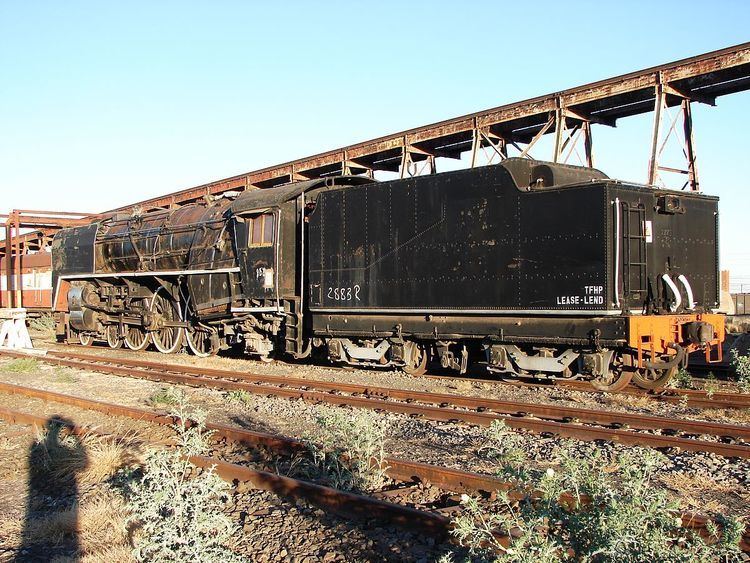In service 1935-1946 | Configuration 2-axle bogies | |
 | ||
Designer South African Railways(A.G. Watson) Builder Berliner MaschinenbauBeyer, Peacock and CompanyHenschel and SonNorth British Locomotive CompanyRobert Stephenson & Hawthorns Gauge 3 ft 6 in (1,067 mm) Cape gauge | ||
The South African type JT tender was a steam locomotive tender.
Contents
Type JT tenders first entered service in 1935, as tenders to the Class 16E 4-6-2 Pacific type express passenger steam locomotives which were placed in service by the South African Railways in that year. Until 1946, more entered service as tenders to the Classes 15E and 15F.
Manufacturers
Type JT tenders were built between 1935 and 1945 by Berliner Maschinenbau, Beyer, Peacock and Company, Henschel and Son, North British Locomotive Company and Robert Stephenson and Hawthorns.
In 1935, the South African Railways (SAR) placed six Class 16E express passenger steam locomotives in service. The engines and tenders were built by Henschel to the design of A.G. Watson, Chief Mechanical Engineer (CME) of the SAR at the time, and were initially placed in service at Kimberley to work named trains like the Union Express and the Union Limited southwards to Beaufort West and northwards to Johannesburg.
The Type JT first entered service as tenders to these locomotives. Between 1935 and 1946, more entered service as tenders to the Classes 15E and 15F.
Characteristics
The original Type JT tenders were arranged for manual stoking. On tenders which were delivered between 1939 and 1945 with Class 15F numbers 2923 to 3056, provision was made in the design to convert them to mechanical stoking later. These were built by North British and Beyer, Peacock to the design and specifications of W.A.J. Day, who succeeded A.G. Watson as CME in 1936. A mechanical stoker was later tested on no. 2923, before the remaining locomotives of this group were all equipped with mechanical stokers by the late 1940s.
The tender rode on four-wheeled bogies and was virtually identical to the subsequent Type ET tender, which was built with a mechanical stoker. Like the Type ET, it also had a 14 long tons (14.2 tonnes) coal capacity and a maximum axle load of 17 long tons 15 hundredweight (18,030 kilograms), but a 380 imperial gallons (1,730 litres) larger water capacity of 6,000 imperial gallons (27,300 litres), while its empty weight was 1,232 pounds (559 kilograms) less due to the absence of mechanical stoking equipment. These appear to have been the only differences between the Types JT and ET tenders.
Locomotives
Three locomotive classes, built by five manufacturers, were delivered new with Type JT tenders, which were numbered for their engines in the number ranges as shown. An oval number plate, bearing the engine number and often also the tender type, was attached to the rear end of the tender.
Classification letters
Since many tender types are interchangeable between different locomotive classes and types, a tender classification system was adopted by the SAR. The first letter of the tender type indicates the classes of engines to which it can be coupled. The "J_" tenders could be used with the locomotive classes as shown.
The second letter indicates the tender's water capacity. The "_T" tenders had a capacity of between 5,587 and 6,000 imperial gallons (25,400 and 27,300 litres; 6,710 and 7,210 US gallons).
A number, when added after the letter code, indicates differences between similar tender types, such as function, wheelbase or coal bunker capacity.
